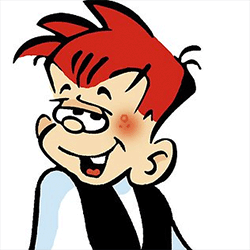Column: Is that graffiti or art? How LA draws the lines
Published in Lifestyles
The credit as L.A.'s first known muralist goes to Einar Petersen, who ornamented mostly inside walls with historic, storytelling murals ordered up and paid for. He painted hundreds, murals of a jungle and of the Garden of Gethsemane at the old Clifton's cafeteria, five panels of L.A. history at the Rosslyn Hotel — now, predictably, covered up, damaged, destroyed.
The present-day mural wars arguably began in 1932, over "América Tropical," on Olvera Street, a work commissioned for L.A.'s Olympic year and painted by the renowned Mexican muralist David Alfaro Siqueiros.
Once the sponsors got an eyeful, they ordered the mural painted over. Its message was in its subtitle, and it was not subtle: "Oppressed and Destroyed by Imperialism," a panorama not of contented campesinos but of tortured and tormented Latinos and Native Americans laboring under the policing eye of the U.S.
For decades after, the whitewashed wall carried its own kind of power, and Siqueiros knew it; it's said that when its restoration was suggested in the 1960s, he was against it, because the force of censorship was maybe even more potent than the mural itself. It was at last conserved and displayed in 2012.
"América Tropical's" spiritual child is Noni Olabisi's relentless mural "To Protect and Serve." The prolific Black muralist, who died a couple of years ago, painted the Jefferson Park work in 1997 and filled space with Black Panthers and celebrated Black radicals, helmeted police and hooded Klansmen. Its funding sidestepped public coffers to keep clear of the kind of censorship that had blotted out "América Tropical."
SPARC helped to pay for Olabisi's mural and is working to keep it spruced. The Social and Public Art Resource Center has spent almost five decades battering down the barricades between street art and what Siqueiros called "easel art," standing up for "activist and socially relevant artwork."
One of its co-founders is Judith Baca, whose monumental horizontal mural along the Tujunga Wash in the San Fernando Valley changed many Angelenos' POV about graffiti art. Over more than a half-mile, "The Great Wall of Los Angeles" shows the histories of Californians whose stories are rarely told, and scores of young people turn out to join professionals to keep the 1978 mural perpetually refreshed.
Not far from there, around Pacoima's city hall, you'll find Mural Mile, block after block of artworks done with color, ingenuity, humor, passion and meaning, and changing all the time.
A fellow named Banksy changed some minds about graffiti art too. The anonymous British artist chooses public spaces for his guerrilla work, and inadvertently created a paradox: His works can sell for millions, and people have been caught trying to get them off public walls to take to auction houses.
Banksy's L.A. mural, 2010's "Swing Girl," is downtown, visible only from a deep alley between buildings — which is the point it makes about overbuilt places. The word painted on the wall is PARKING. Banksy almost whitewashed out the last three letters, and hanging from the first part, PARK, he painted a swing with a little girl perched on it.
...continued
©2024 Los Angeles Times. Visit at latimes.com. Distributed by Tribune Content Agency, LLC.






Comments